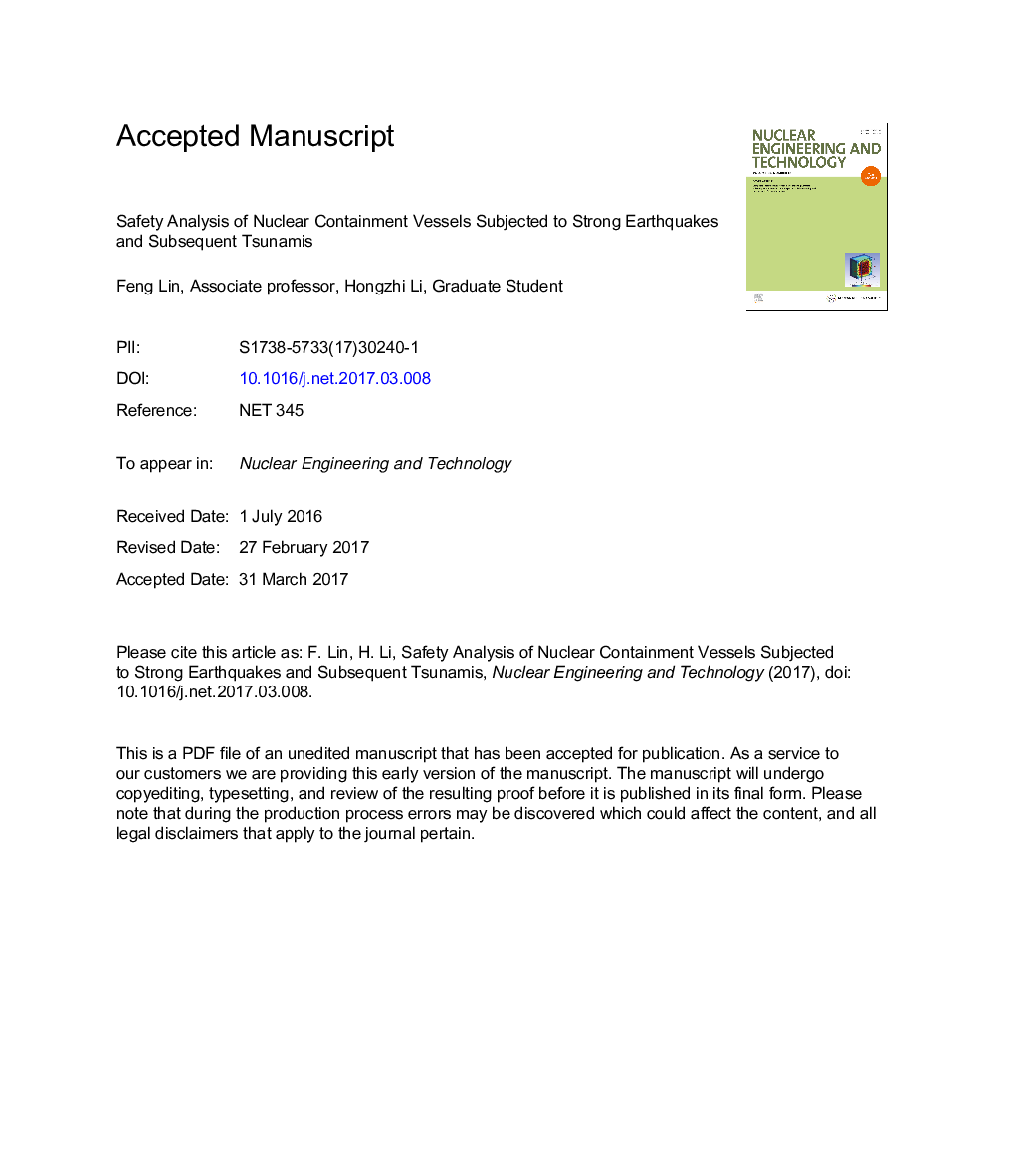| Article ID | Journal | Published Year | Pages | File Type |
|---|---|---|---|---|
| 5477935 | Nuclear Engineering and Technology | 2017 | 41 Pages |
Abstract
Nuclear power plants under expansion and under construction in China are mostly located in coastal areas, which means they are at risk of suffering strong earthquakes and subsequent tsunamis. This paper presents a safety analysis for a new reinforced concrete containment vessel in such events. A finite element method-based model was built, verified, and first used to understand the seismic performance of the containment vessel under earthquakes with increased intensities. Then, the model was used to assess the safety performance of the containment vessel subject to an earthquake with peak ground acceleration (PGA) of 0.56g and subsequent tsunamis with increased inundation depths, similar to the 2011 Great East earthquake and tsunami in Japan. Results indicated that the containment vessel reached Limit State I (concrete cracking) and Limit State II (concrete crushing) when the PGAs were in a range of 0.8-1.1g and 1.2-1.7g, respectively. The containment vessel reached Limit State I with a tsunami inundation depth of 10Â m after suffering an earthquake with a PGA of 0.56g. A site-specific hazard assessment was conducted to consider the likelihood of tsunami sources.
Related Topics
Physical Sciences and Engineering
Energy
Nuclear Energy and Engineering
Authors
Feng Lin, Hongzhi Li,
